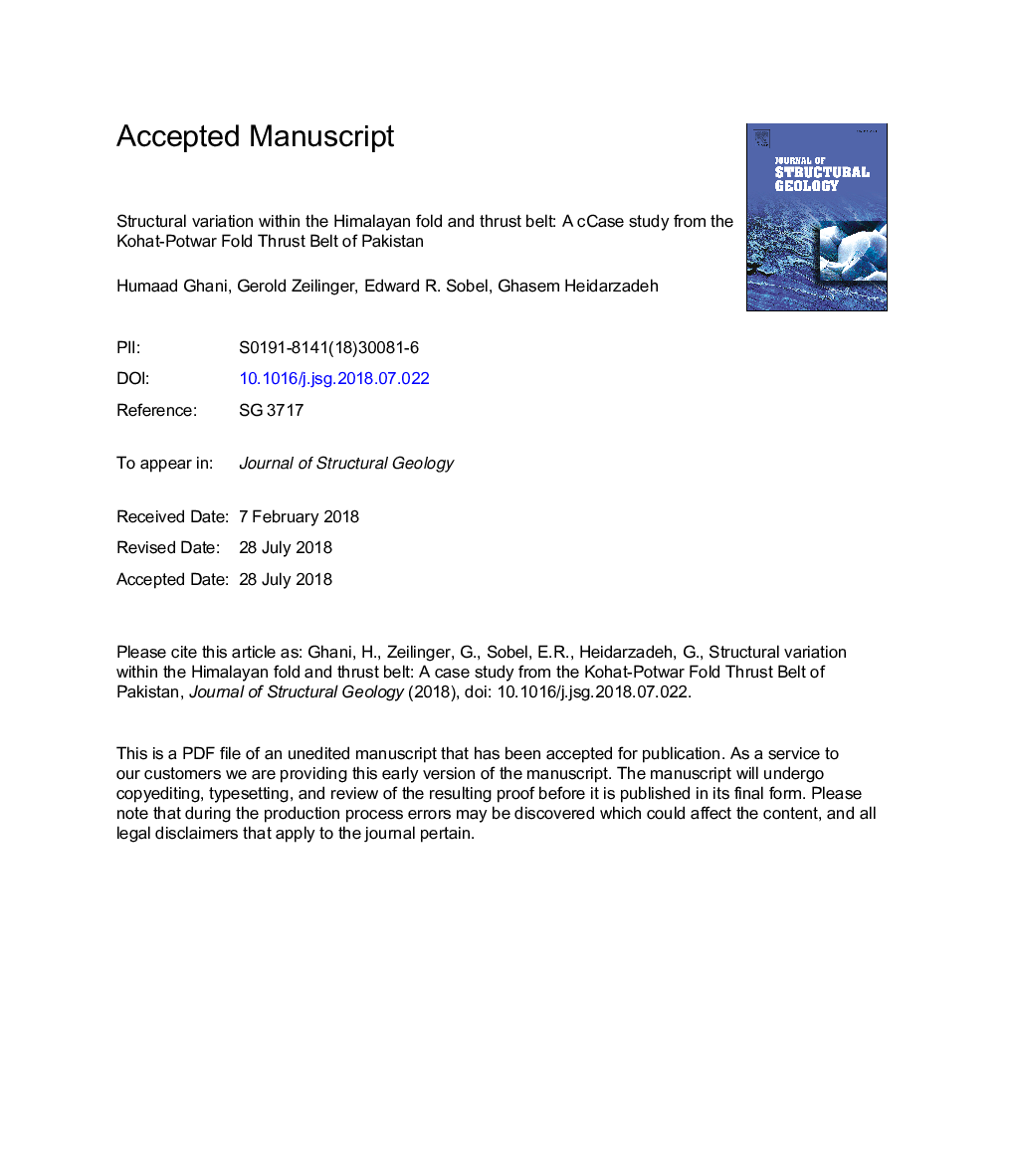| کد مقاله | کد نشریه | سال انتشار | مقاله انگلیسی | نسخه تمام متن |
|---|---|---|---|---|
| 8946389 | 1645345 | 2018 | 49 صفحه PDF | دانلود رایگان |
عنوان انگلیسی مقاله ISI
Structural variation within the Himalayan fold and thrust belt: A case study from the Kohat-Potwar Fold Thrust Belt of Pakistan
ترجمه فارسی عنوان
تنوع ساختاری درون حلقه هیمالیا و کمربندهای محرک: مطالعه موردی از کمربند مهاری کلاکت پوتره پاکستان
دانلود مقاله + سفارش ترجمه
دانلود مقاله ISI انگلیسی
رایگان برای ایرانیان
موضوعات مرتبط
مهندسی و علوم پایه
علوم زمین و سیارات
زمین شناسی
چکیده انگلیسی
The Kohat and Potwar fold thrust belts (KP-FTB) in Pakistan exhibit structural variations over 250â¯km along strike within the Himalayan fold and thrust system. Our 3D deformation model shows that Kohat surface structures evolved above an active roof thrust in Eocene evaporites. The ramp-forming duplexes in the Kohat were stacked and passively transported toward the foreland above new ramps, resulting in up to 5â¯km of thickening between the two decollements. Ramps from the Kohat extend into the Potwar as thrust tips of fault propagation folds. The basement slope changes from flat (βâ¯<â¯1°) below the northern part to north-dipping (βâ¯>â¯1°) below the southern part, corresponding to the change in structural style and complexity of the KP-FTB. The Kalabagh Fault Zone, linking the two belts, is interpreted as a zone of complex dextral strike-slip rotational faulting. Salt expulsed from the hanging walls of normal faults and under synclines in the Kalabagh Fault Zone moved toward the footwall of normal faults, accumulated in the cores of anticlines, and formed lobe structures at the deformation front. The fundamental reasons for the variable structural styles are changes in decollement strength, basement slope, preexisting normal faulting, presence of a secondary decollement and spatially-variable salt mobility and accumulation.
ناشر
Database: Elsevier - ScienceDirect (ساینس دایرکت)
Journal: Journal of Structural Geology - Volume 116, November 2018, Pages 34-46
Journal: Journal of Structural Geology - Volume 116, November 2018, Pages 34-46
نویسندگان
Humaad Ghani, Gerold Zeilinger, Edward R. Sobel, Ghasem Heidarzadeh,
